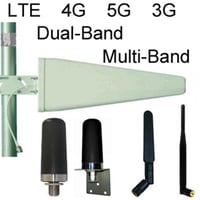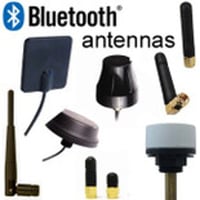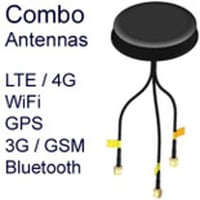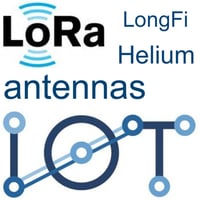2.4GHz WiFi, Bluetooth, BLE, ISM
2.4GHz Antennas: Applications, Types, and Suitability for IoT
2.4GHz antennas are pivotal components in the vast world of wireless communication. They have become increasingly relevant due to the burgeoning Internet of Things (IoT) movement. This article sheds light on the applications and compatible wireless technologies of 2.4GHz antennas, the types available, and their aptness for specific IoT endeavors. Let's delve in.
Applications and Compatible Wireless Technologies
-
Wi-Fi (IEEE 802.11b/g/n): One of the most widespread uses of the 2.4GHz spectrum is Wi-Fi. Numerous devices such as smartphones, laptops, and routers utilize 2.4GHz antennas for stable and far-reaching connections. While dual-band routers also use the 5GHz spectrum, 2.4GHz is preferred for broader coverage.
-
Bluetooth: Predominantly used for short-range communication between devices like headphones, smartphones, and smartwatches, Bluetooth leverages the 2.4GHz frequency for its operations.
-
Zigbee & Thread: In the realm of smart homes and IoT, Zigbee and Thread networks are popular choices. These low-power wireless communication protocols utilize 2.4GHz antennas to connect a myriad of devices like smart bulbs, thermostats, and security sensors.
Types of 2.4GHz Antennas
-
Dipole Antennas: Often termed 'rubber duck' antennas, these are standard with many Wi-Fi routers. They are omnidirectional, meaning they radiate signal in all horizontal directions.
-
Directional Antennas: Contrary to omnidirectional antennas, these focus signals in a specific direction. Yagi, patch, and parabolic grid antennas are popular examples. They are ideal for point-to-point connections or extending wireless coverage in a particular direction.
-
Monopole Antennas: These are similar to dipole antennas but have a ground plane to direct the signal upwards. They're often found in applications where space is a constraint.
-
PCB Antennas: As the name suggests, these antennas are integrated into PCBs (Printed Circuit Boards) and are common in compact devices like Wi-Fi modules in IoT devices.
Suitability for Specific IoT Applications
Given the varied applications of IoT, the choice of antenna hinges on specific requirements:
-
Smart Homes: Zigbee, Thread, or Wi-Fi-based smart home devices generally employ PCB or dipole antennas due to their compact size and omnidirectional nature.
-
Industrial IoT (IIoT): In factories or vast industrial setups, directional antennas may be more suitable. They can extend the coverage to longer distances and ensure stable connections amidst potential interferences.
-
Agriculture IoT: For sprawling farmlands, a combination of omnidirectional antennas for local connections (like soil sensors) and directional antennas for connections between distant equipment can be optimal.
-
Wearable Tech: Devices like smartwatches or fitness bands use compact antennas, often integrated PCB types, due to their limited space.
ISM Band of Frequencies and Allocation
ISM means Industrial, Scientific and Medical frequency band.
This is a band of radio and microwave frequencies clustered around 2.4GHz, reserved and designated for industrial, scientific and medical equipment that use RF. Industrial equipment like MRI machines, testing equipment, and some radio telescopes use this ISM band of frequencies. Smaller consumer devices such as microwave ovens, garage door system, cordless phone, wireless router and wireless mouse are also designed to run at frequencies around 2.4 GHz.
Most telecommunication devices operate at a much lower frequency than 2.4GHz. Having other devices operate at only a certain frequency range, in this case, ISM, reduces interference with the telecommunication frequencies. This means that using a wireless router and a cellular phone at the same time will have no interference with each other.
2.4GHz is not the only ISM frequency. It is only the most common because there is no need for licensing devices to use it. Other ISM frequencies can be as high as 24.125GHz or even as low as 13.56MHz. Depending on the location and local acceptance, authorities can allocate ISM radio frequencies with some little flexibility.
Allocation of ISM radio frequencies is stipulated by the International Telecommunication Union (ITU). ITU has documented a worldwide ISM allocation table which varies slightly depending on the region. ISM users must accept laid down terms and regulations to ensure safety and avoid interference.
Conclusion
The ubiquity of 2.4GHz antennas in the wireless and IoT landscape underscores their importance. Recognizing the compatible technologies, understanding the diverse antenna types, and matching them to IoT applications ensures optimal performance and connectivity. As the IoT ecosystem continues to expand, so will the relevance and innovation around these antennas










